How to Improve Your Nonprofit Marketing Strategy in 2024 [Templates and Tools Included]
In this Ultimate Guide, we walk you through what it takes to be effective with Nonprofit Marketing in the Digital World. We give away all our knowledge, templates and tools for free.

Nonprofit Marketing has changed a lot over the years. Especially when Covid-19 hit, many Nonprofits were forced to jump into the digital world since hosting events and such in the physical world was no longer an option.
This massive change must have been difficult for many Nonprofits, NGOs, and Social Enterprises that rely on human-to-human activity and were no longer able to do so.
Other charities already embraced the power of Digital Nonprofit Marketing, Charity: Water being a great example and they were better suited to cope with the massive changes.
When one door closes, another one opens.
What is clear is that many Nonprofits have been losing out on the power of Digital Marketing. Today, together with StoryLab.ai, we want to share everything we’ve learned throughout the years. We’ve set up more than 10 templates, brought them all together in a Growth Storytelling Framework, created guides so you can learn step-by-step how to use them and we’re giving it away for free. You don’t even need to give us your email address.
We understand that many pieces of this puzzle need even more explanation. We’ve also got you covered with that. Join the Growth Storytelling LinkedIn Group and ask us anything. We’re here to help.
Shall we get into it? Here’s how the Growth Storytelling Framework looks like and what we’re going to be discussing today:

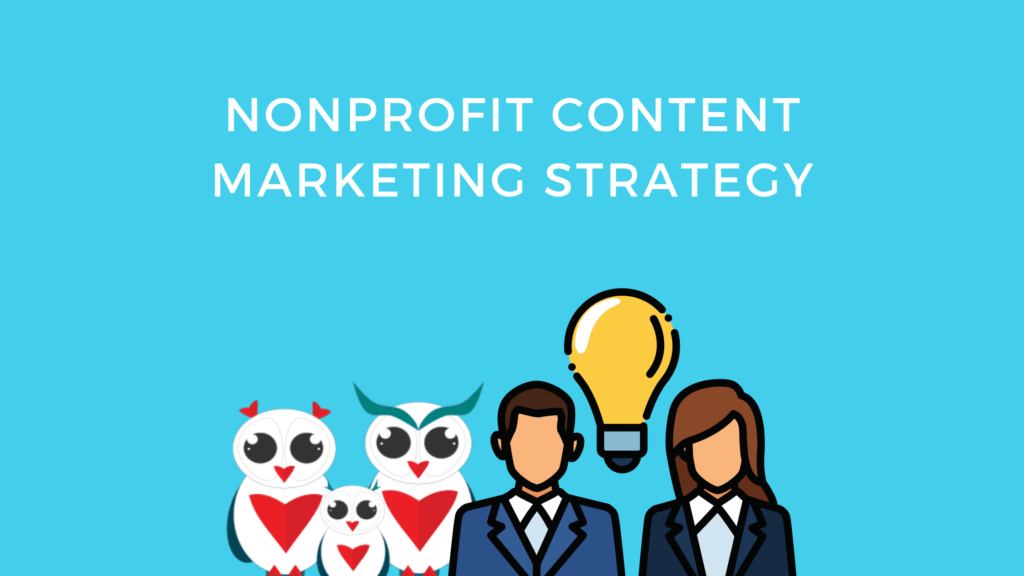
Content Creation and Content Marketing Strategy for Nonprofits
Before your start Creating Content, you need to set up a strategy for your Nonprofit. You don’t want to be sailing to the left and drift away from your goals if you actually needed to sail to the right.
Taking a bit of time to write a couple of things on the sheet we provide, chatting with colleagues, volunteers and donors can help a lot.
If you can answer the 8 simple questions, you’re already on the right track. Nothing needs to be perfect from the get-go. Start somewhere and get a feeling as you proceed.
The reason you should set up your Content Marketing Strategy is because your Nonprofit unique. Start identifying:
- What makes your nonprofit unique?
- Who would be interested in the content you create?
- Where do potential donors people hang out?
Check out the simple 8-step Content Marketing Strategy Guide.
Your strategy sits at the base of your content creation. The stronger it is, the easier the next steps are going to be.
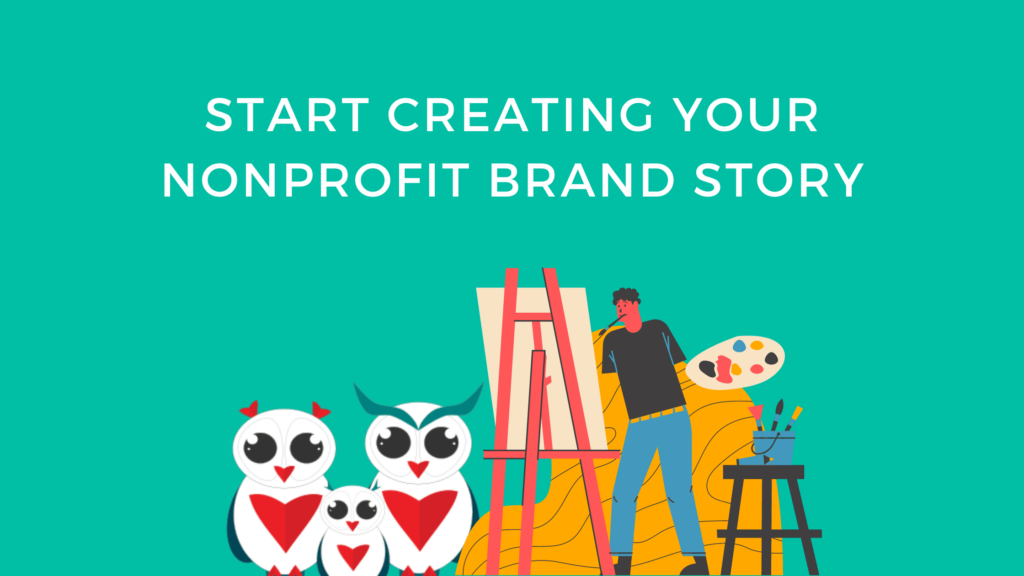
Start Creating Your Nonprofit Brand Story
As a Nonprofit, NGO, or Social Enterprise, you have a head start over for-profit organizations when it comes to telling a compelling Brand Story. You should definitely use that to your advantage. Later in this Guide, we will go over how to tell a compelling story when creating content. This exercise is about creating your brand story so you can use bits and pieces throughout your communications.
Get your Brand Story Guide and Template.
Your Nonprofit Brand Story consists of three elements related to your past (I), present (II), and future (III). Completing this exercise should give you valuable insights which you can use for years.
Just like the rest of the resources, it should be evolving as you gather more insights.

Nonprofit Content Marketing Goals and KPIs
Just because you’re not running a for-profit organization, it doesn’t mean that you should not set goals and pay attention to what is working and what is not. You need to keep experimenting to reach your Nonprofit’s goals and be able to have the biggest impact you can.
In the Content Marketing Goals and KPIs Guide, we walk you through how to identify your most important channels, look at data you already have, and work backward to set goals and KPIs for the future.
You don’t need to be accurate. You don’t need to set goals for every single thing that you do. You do need to start somewhere so you can get a feeling of what is working and what is not and to improve along the way.
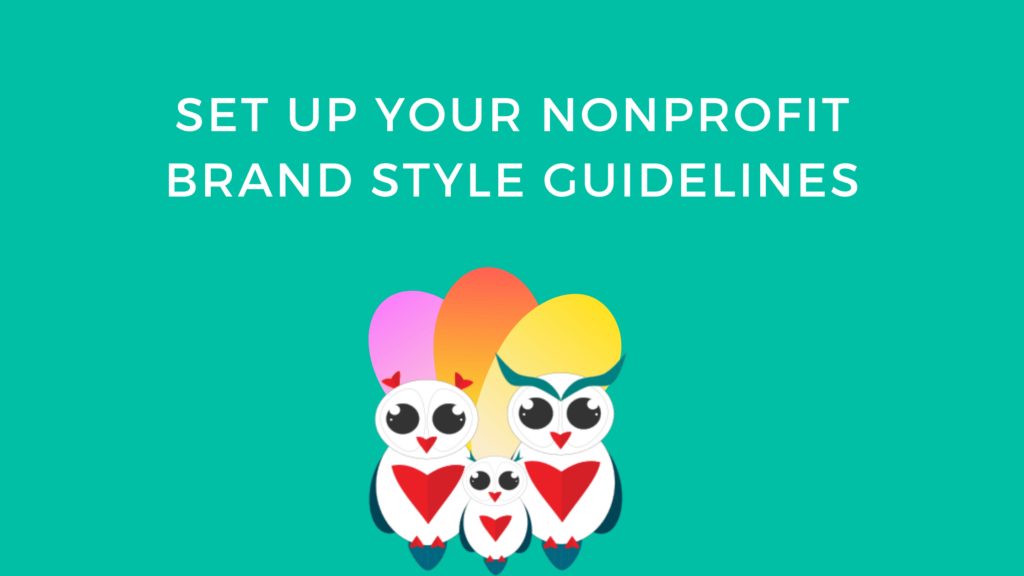
Set up your Nonprofit Brand Style Guidelines
As a Nonprofit, you need to tell a consistent story and you need to be instantly recognizable. Setting up your Brand Style Guidelines (and sticking to them) will help you to create content that’s recognizable on all channels.
From all the exercises in the Growth Storytelling Framework, setting up your Brand Style Guidelines is one of the easiest. Be sure not to skip it.
You can find out how to set up your Brand Style Guidelines here and if you want to check out this article to get inspired by some cool Nonprofit Brand Style Guidelines examples.
In this article, we’ve used our own guidelines often. For selecting the colors, for our tone of voice, our Owls mascots, and for the visuals we will be using on our Social Media accounts. It’s just great to have consistency in everything we create, have easy-to-use templates, and not needing to think about every new image we create.
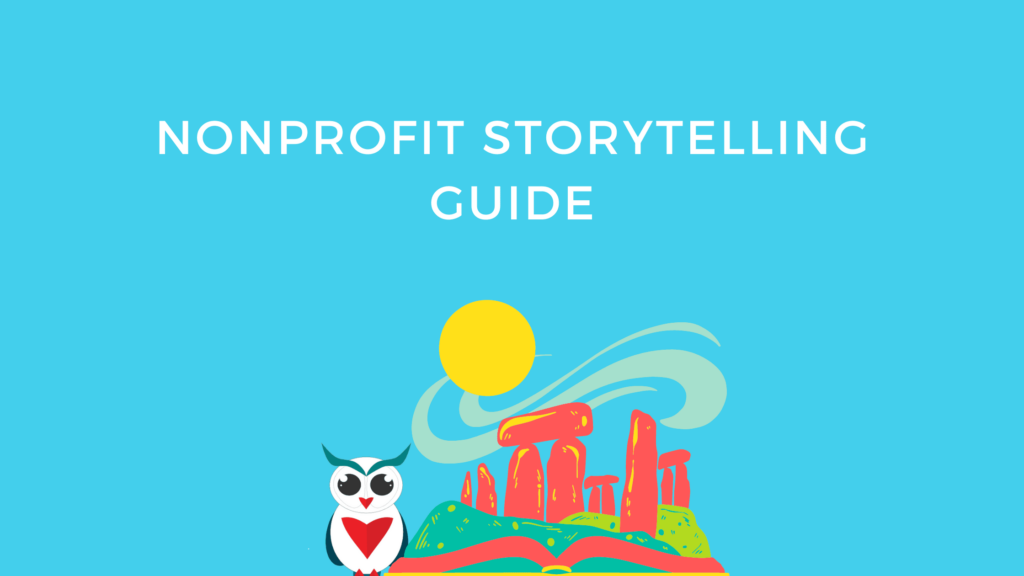
Nonprofit Storytelling
As a Nonprofit, storytelling is a must. Luckily you probably actually have a great story to tell and people have been in love with hearing and reading stories since… Since forever!
Before writing and reading became a thing, great stories were the ones that survived the test of time.
To be honest, if you’re not a storyteller by heart, it can be pretty difficult to add storytelling techniques to your writing. But I’m hoping you’re thinking; ‘challenge accepted’!
Because! My goodness, a well-written piece of text with a great story is so great to read and it makes people feel something and it gets them to take action!
As a Nonprofit, that’s what you want. You want people to take action!
Take small steps, do what you need to do, but start writing better stories. The Storytelling Guide takes you to clear steps on how to do so.

Keyword Research for Nonprofits
What we notice by working with Nonprofits for quite a while is that they usually write articles and blog posts about what they think is valuable for their target audience.
This means that you could be totally wrong and that you’ve spent days if not weeks or months writing content and… no one reads them because they don’t rank in search engines.
We see this happen often. But what if I told you that you don’t need to guess anymore?
What if I told you that there are tools that can help you find out what people are searching for, how often, and how easy/difficult it is to rank for those search terms?
You can find the entire process in the Keyword Research Guide and the Growth Storytelling Frameworks has a cool template included so you can get started right away.
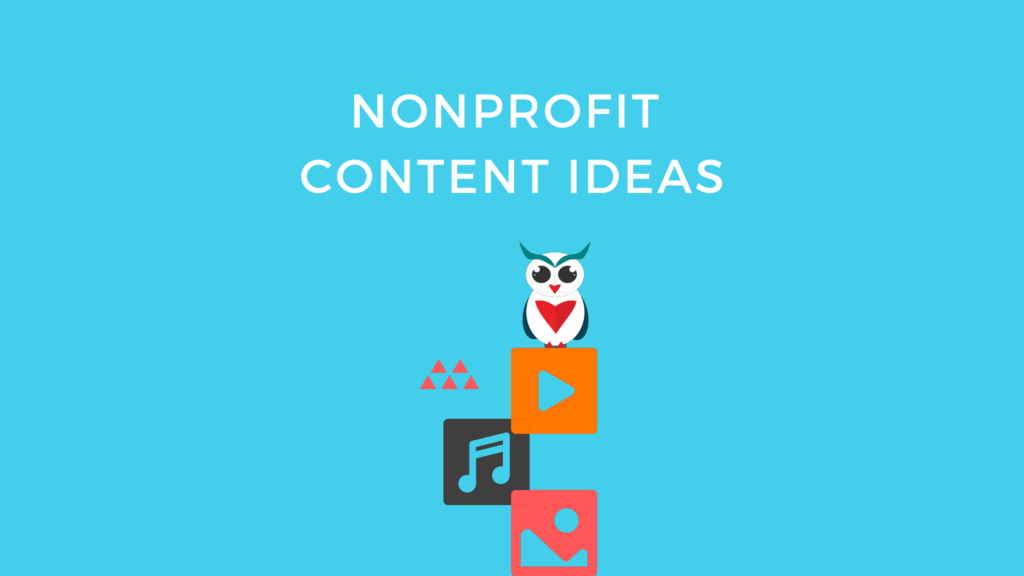
Coming up with Effective Content Ideas for your Nonprofit
To help you out, even more, we’ve set up a process of taking the keywords you’ve identified as highly valuable, entering them in a Content Idea Generator, and coming up with effective content ideas your audience will love.
It’s always difficult to come up with new content ideas that are not just fun to execute but actually help you reach your goals. Be sure to check out the guide and template and put them to good use.
The more valuable content you can create, the bigger your impact.
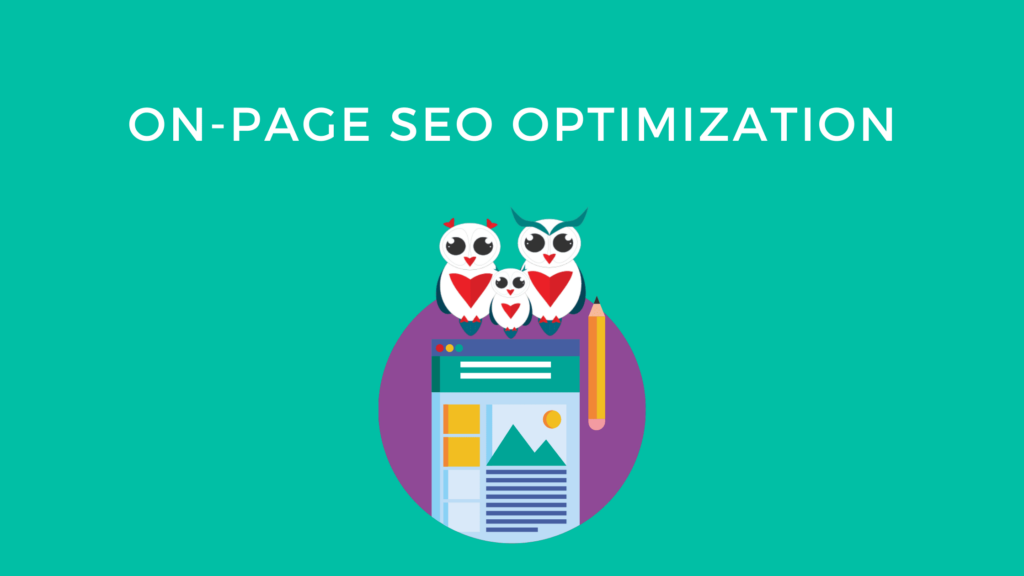
On-Page SEO Optimization Checklist
After you’ve written your articles and blog posts, take a couple of minutes and go through the On-page SEO Optimization Checklist to check if the keyword you targeted is actually in your heading, title tag, and intro. Check if your images are compressed and have SEO-optimized alt tags. Check a couple of small things that can help a ton with your on-page optimization.
The better you’re able to rank in search engines, the more people you can reach, the bigger the impact 😉
Not sure how often I’m going to repeat that in this article.
My point is. You can go through the steps and be done with it. Or take a bit of extra time for each step of your content creation and distribution and be a lot more effective.
The more you do it, the easier it gets!
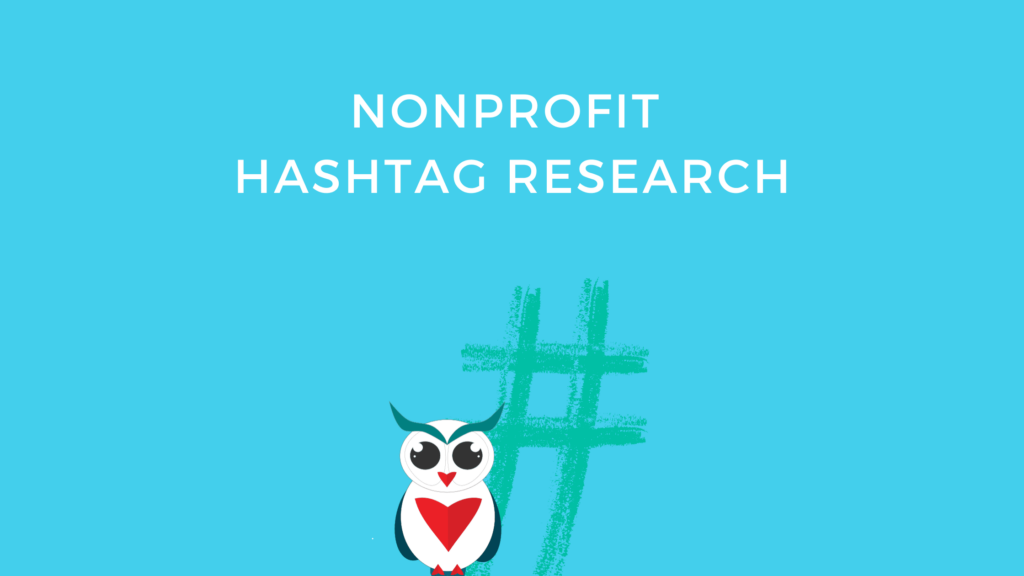
Nonprofit Hashtag Research
Just like doing your keyword research to find out which keywords people actually search for, hashtag research helps you to understand which hashtags people actually follow.
We often see people adding random hashtags to their posts. #OurNonProfitRocks.
Ok cool. How will that help to make sure you reach your target audience on Social Media?
Check out how you can find the best hashtags per social channel and how to create a mix of hashtags to target low competitive and popular hashtags with every post.
The guide walks you through the process, tools, and ideas behind a good hashtag mix. Be sure to check it out.
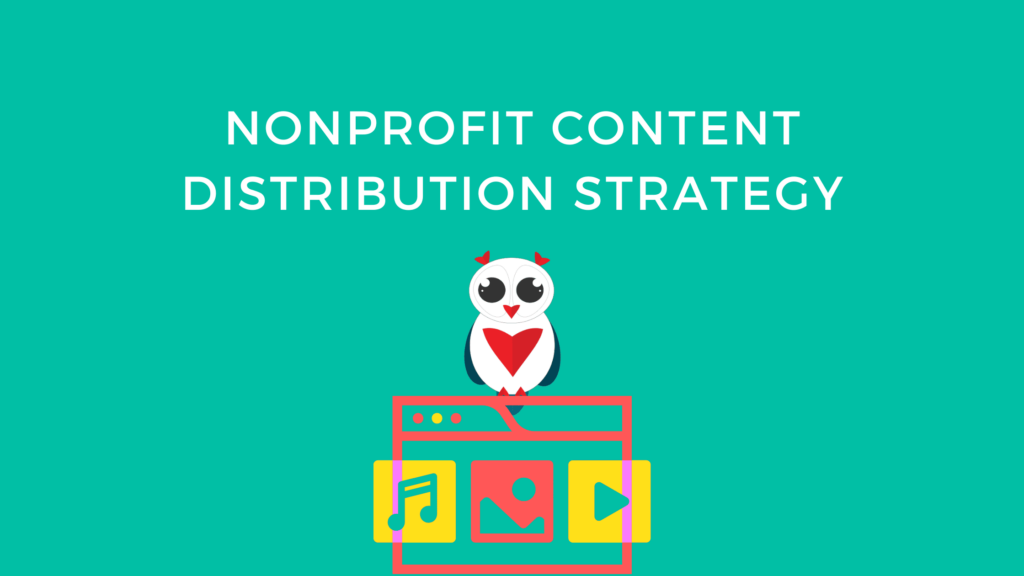
Nonprofit Content Distribution Strategy
After you’ve created all the great pieces of content, it’s time to share it with the world. That doesn’t mean post it on your Facebook page once and be done with it.
No!
Content distribution is an art in and of itself. Just like content creation.
We’ve been experimenting with our Content Distribution Framework for years and we want to share how to get the most out of your promotion efforts.
Check out the Content Distribution Strategy Guide and start setting up a simple structure at first.
The framework can hold thousands of articles and dozens of distribution channels, but don’t overwhelm yourself. Start slowly and build up.
There you have it.
You made it to the end of the Nonprofit Marketing Guide.
It might feel like a lot. But remember. This Guide is pretty complete. If you master all the steps, you’ll be save to 10x your goals and reach them.
Also, there are a lot of small improvements you can start making today!
The Growth Storytelling Framework is created by three professional marketers with more than 30 years of experience. We want to share it with the world so we can all create beautiful content, reach our goals and support each other.

FAQ
Q: What is nonprofit marketing?
- Nonprofit marketing refers to activities and strategies that nonprofits use to promote their causes, services, and overall mission to various audiences to garner support, donations, and awareness.
Q: How does nonprofit marketing differ from for-profit marketing?
- Unlike for-profit marketing, which focuses on selling products or services for profit, nonprofit marketing aims to raise awareness, attract donors and volunteers, and promote social causes.
Q: What are effective nonprofit marketing strategies?
- Effective strategies include storytelling, leveraging social media, email marketing, creating compelling content, hosting events, and forming partnerships.
Q: How important is a website for a nonprofit organization?
- A website is crucial for credibility, information dissemination, fundraising, and as a hub for all marketing activities.
Q: Can social media be beneficial for nonprofit marketing?
- Social media is highly beneficial for increasing reach, engaging with the community, and sharing stories and updates cost-effectively.
Q: What role does storytelling play in nonprofit marketing?
- Storytelling helps in connecting emotionally with audiences, making the cause relatable, and encouraging empathy and action.
Q: How can a nonprofit use email marketing effectively?
- Nonprofits can use email marketing to update supporters, share success stories, and make appeals for donations and volunteers.
Q: What are some low-cost marketing ideas for nonprofits?
- Low-cost ideas include leveraging social media, word-of-mouth, volunteer ambassadors, partnerships, and community events.
Q: How can a nonprofit measure the success of its marketing efforts?
- Success can be measured by tracking engagement, donation levels, event attendance, website traffic, and social media growth.
Q: What is donor-centric marketing?
- Donor-centric marketing focuses on the donor’s perspective and needs, fostering relationships that encourage ongoing support.
Q: How can nonprofits leverage content marketing?
- Nonprofits can use content marketing by creating blogs, videos, and infographics that inform, educate, and inspire audiences about their cause, which can help in boosting engagement and support.
Q: What is the importance of branding in nonprofit marketing?
- Strong branding helps nonprofits establish a recognizable identity, build trust, and communicate their mission and values effectively to the public.
Q: How can nonprofits utilize storytelling in their marketing?
- Nonprofits can use storytelling to share the impact of their work, highlight beneficiary stories, and connect emotionally with audiences, making their cause more tangible and relatable.
Q: Can partnerships and collaborations enhance nonprofit marketing efforts?
- Partnerships with businesses, influencers, or other nonprofits can expand reach, provide additional resources, and add credibility to the organization’s efforts.
Q: How can nonprofits benefit from digital marketing?
- Digital marketing, through channels like social media, email, and online advertising, offers cost-effective ways to reach a wider audience, drive engagement, and increase donations.
Q: What role do volunteers play in nonprofit marketing?
- Volunteers can act as ambassadors, spreading the word about the nonprofit’s work, helping in organizing events, and sharing content through their networks.
Q: How important is video content in nonprofit marketing?
- Video content is highly effective in nonprofit marketing for telling stories, showcasing the impact of work, and making emotional connections with the audience.
Q: What are the best practices for social media marketing in the nonprofit sector?
- Best practices include posting regularly, engaging with followers, sharing impactful stories, using hashtags effectively, and leveraging different platforms for varied content.
Q: How can a nonprofit develop a marketing plan?
- A marketing plan should be developed based on the nonprofit’s goals, target audience, available resources, and key messages, with a clear strategy for different channels.
Q: How can nonprofits effectively communicate their impact to supporters?
- Effectively communicate impact by sharing success stories, data, and testimonials, and demonstrating how contributions have been used to make a difference.
Q: How can a nonprofit use events for marketing?
- Nonprofits can host or participate in events to raise awareness, engage the community, and fundraise. Events can be in-person or virtual, such as galas, charity runs, webinars, or online challenges.
Q: What is the role of public relations in nonprofit marketing?
- Public relations (PR) is crucial for building and maintaining a positive public image, managing media relations, and handling crisis communications to uphold the organization’s reputation.
Q: How can a nonprofit leverage influencer partnerships?
- Influencers can help nonprofits reach broader audiences. Partnering with influencers who align with the organization’s values can amplify their message and attract new supporters.
Q: Why is donor retention important in nonprofit marketing?
- Donor retention is vital as it is more cost-effective to retain existing donors than acquire new ones. Loyal donors can provide a stable source of funding and are more likely to advocate for the cause.
Q: Can a nonprofit use direct mail in its marketing strategy?
- Direct mail, though traditional, can still be effective, especially for reaching older demographics or local communities. It can be used for fundraising appeals, event invitations, or updates on the organization’s work.
Q: How effective are newsletters for nonprofit organizations?
- Newsletters are effective for keeping supporters informed about ongoing projects, upcoming events, and organizational news, helping maintain regular contact with the donor base.
Q: What impact does data analytics have on nonprofit marketing?
- Data analytics helps nonprofits understand donor behavior, campaign performance, and engagement patterns, allowing for more targeted and effective marketing strategies.
Q: How important is website optimization for nonprofits?
- A well-optimized website is crucial as it serves as the digital front door of the organization. It should be user-friendly, mobile-responsive, and optimized for search engines to attract and engage visitors.
Q: How can a nonprofit organization use SEO effectively?
- Effective use of SEO involves optimizing website content with relevant keywords, ensuring website accessibility, and creating quality content that ranks well in search engine results, driving organic traffic.
Q: What are the challenges of nonprofit marketing?
- Challenges include limited budgets, ensuring a consistent and compelling message across channels, differentiating from other nonprofits, and effectively measuring and demonstrating the impact of marketing efforts.